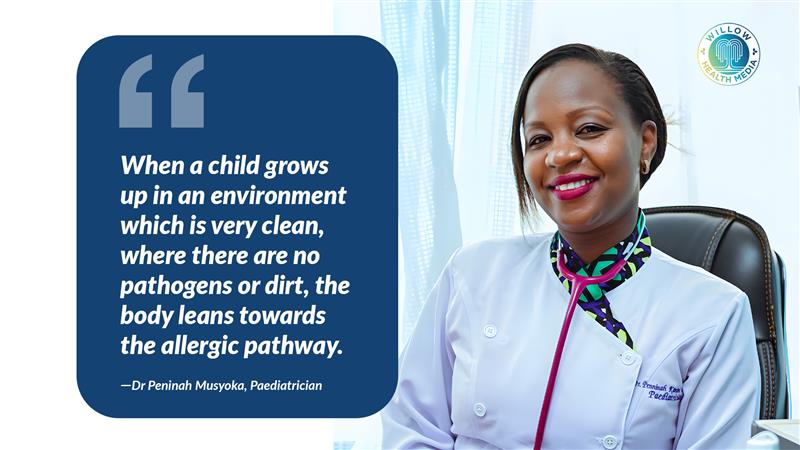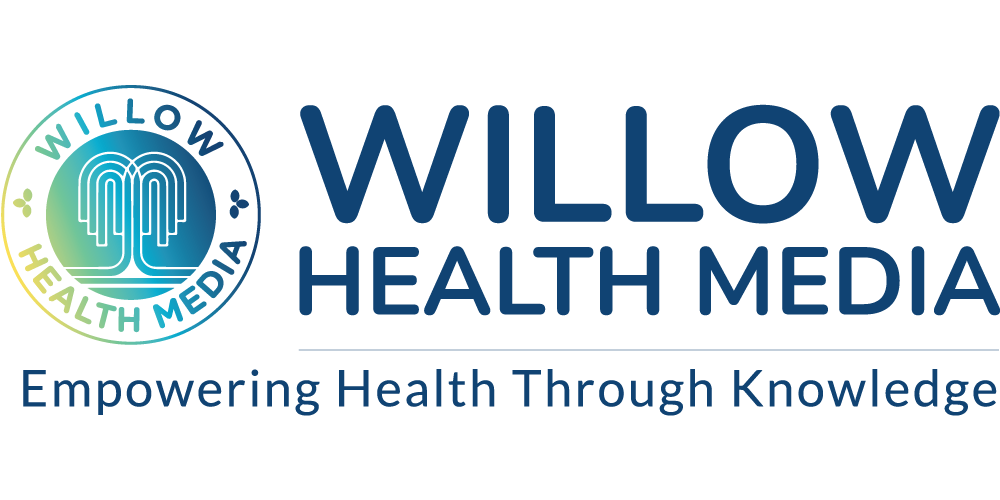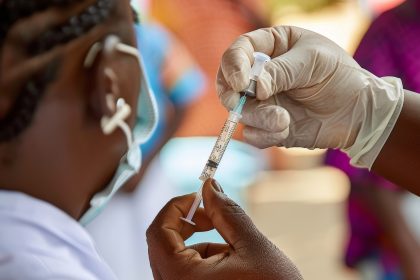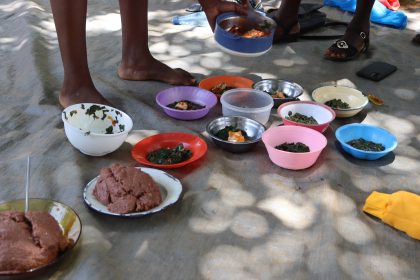If a child grows up in an environment that’s too clean, their immune system gets ‘bored’ and starts overreacting to harmless things, thus developing allergies.
A child’s world should be safe, but for some, ordinary things like eggs, milk, dust, or even cold air can trigger terrifying reactions.
Dr Peninah Musyoka, a paediatrician at Machakos Children’s Clinic, deals with child allergies every day. She explains that allergies happen when the body overreacts to safe things – like food or pollen – that don’t bother most people.
These reactions can range from mild rashes to life-threatening emergencies. Even common foods like eggs can become dangerous for allergic children. Symptoms often begin with skin problems before getting worse.
“Mostly, you can have some skin reactions called hives. These are swellings on the skin, like small bumps,” Dr Musyoka explains. “You start feeling itchy, experience swelling of the lips, eyes and tongue, and sometimes hoarseness with your voice.”
She says that the most alarming scenario is an anaphylactic reaction – a rapid, severe response that can be fatal. Some people have difficulty breathing because during the reaction, blood vessels vasodilate (widen), leading to low blood pressure and collapse.
Even trace amounts of allergens can trigger severe responses in sensitive children
“It can be very mild, but it also can be very serious. Actually, an allergic reaction can cause death,” she cautions.
There are four types of allergies based on reaction time. Type 1, for instance, occurs within five to ten minutes and can lead to anaphylaxis. Most are often triggered by foods or certain drugs.
Common food allergens include cow’s milk, eggs, peanuts, tree nuts, fish, shellfish, wheat, and soy – accounting for about 90 per cent of childhood food allergies. Reactions may appear within minutes or take several hours. Dr Musyoka stresses that “even trace amounts can trigger severe responses in sensitive children, making careful label reading essential.”
Beyond foods, medication allergies to antibiotics like penicillin or sulfur drugs pose particular dangers. “You have heard a lot of people die in theatre, because they merely got that kind of reaction and by the time action was being taken, it was already too late,” Dr Musyoka warns. Environmental triggers like dust mites, mould spores, pollen, and animal dander also cause problems. Surprisingly, even physical factors like cold air or exercise can induce reactions.
The clinical presentation varies widely. Skin manifestations like eczema or hives often appear first, followed by gastrointestinal symptoms (vomiting, diarrhoea), respiratory distress (wheezing, nasal congestion), and in severe cases, cardiovascular collapse. Dr Musyoka warns that “each subsequent exposure typically worsens the reaction,” making an accurate diagnosis critical.

Allergen immunotherapy can reduce sensitivity to environmental triggers
Diagnosis involves detailed history-taking, skin prick tests, blood tests measuring IgE (immunoglobulin E)antibodies, and supervised food challenges. Management requires the complete elimination of trigger foods, though controlled exposure under medical supervision may help some children develop tolerance. Allergen immunotherapy can reduce sensitivity to environmental triggers.
People with severe allergies should carry an EpiPen, an auto-injector that counteracts allergic reactions. Another option is to wear a medical alert band, which can also be lifesaving if a person collapses and cannot communicate. Schools and caregivers must have emergency action plans.
While genetic predisposition plays a role, Dr Musyoka touches on the “hygiene hypothesis”, a theory suggesting that overly sterile environments might be contributing to a rise in allergies. “When a child grows up in an environment which is very clean, where there are no pathogens or dirt, the body leans towards the allergic pathway,” she says.
Allergies affect up to 40 per cent of school-aged children globally, so awareness is crucial
Prevention strategies have evolved. Current guidance recommends introducing potential allergens like peanuts early (four to six months for high-risk infants), reversing previous advice to delay such foods. Breastfeeding for six months provides protection, too. Emerging research explores probiotics and nutritional supplements.
Special situations demand caution. Teenagers face risks from behaviours like not carrying epinephrine. Dining out requires careful communication about food preparation. Schools need nut-free tables and staff trained to recognise anaphylaxis. Travel requires medical documentation in local languages.
Dr Musyoka emphasises that “allergy management requires constant vigilance but shouldn’t limit a child’s quality of life.” With proper precautions, allergy-prone children can participate fully in activities. Ongoing research offers hope for better treatments. As allergies affect up to 40 per cent of school-aged children globally, awareness is crucial.
Dr Musyoka’s final advice to parents is clear: “Disliking a particular food does not equate to an allergy; an allergy can actually kill. Mothers should expose their children to different types of food to know which they are allergic to, but always do it systematically and under guidance.”
This story was first published by Willow Health Media on August 26, 2025.
























